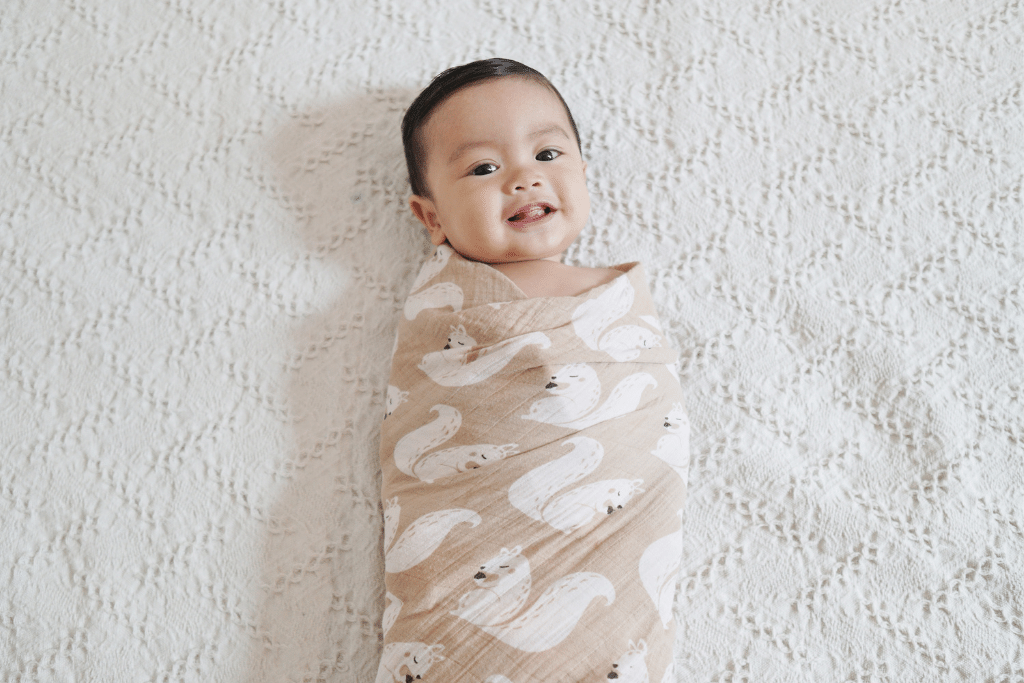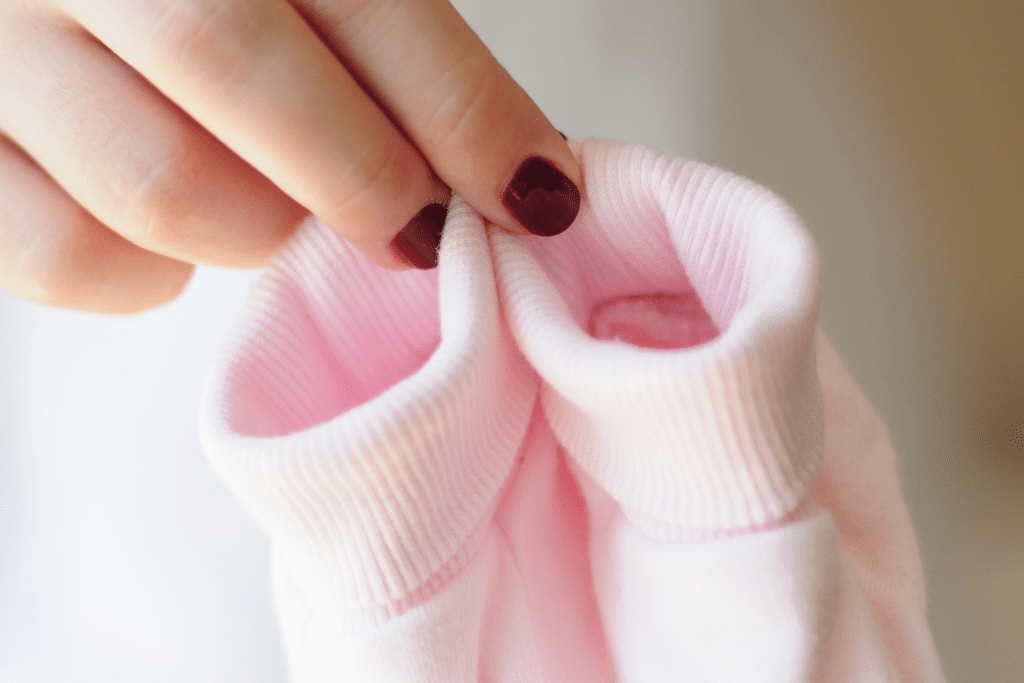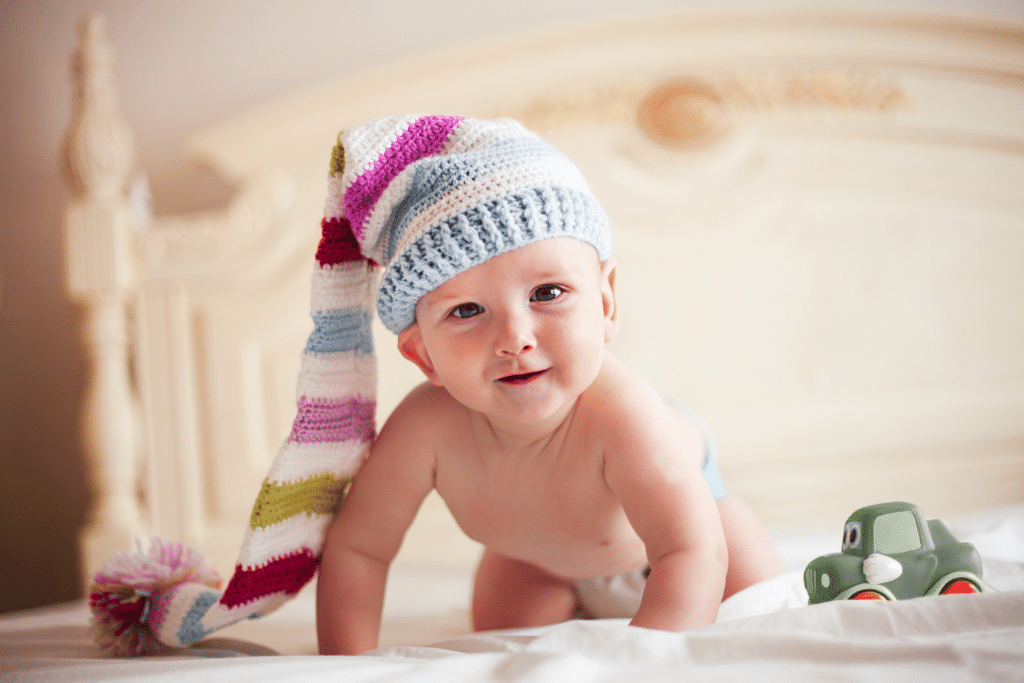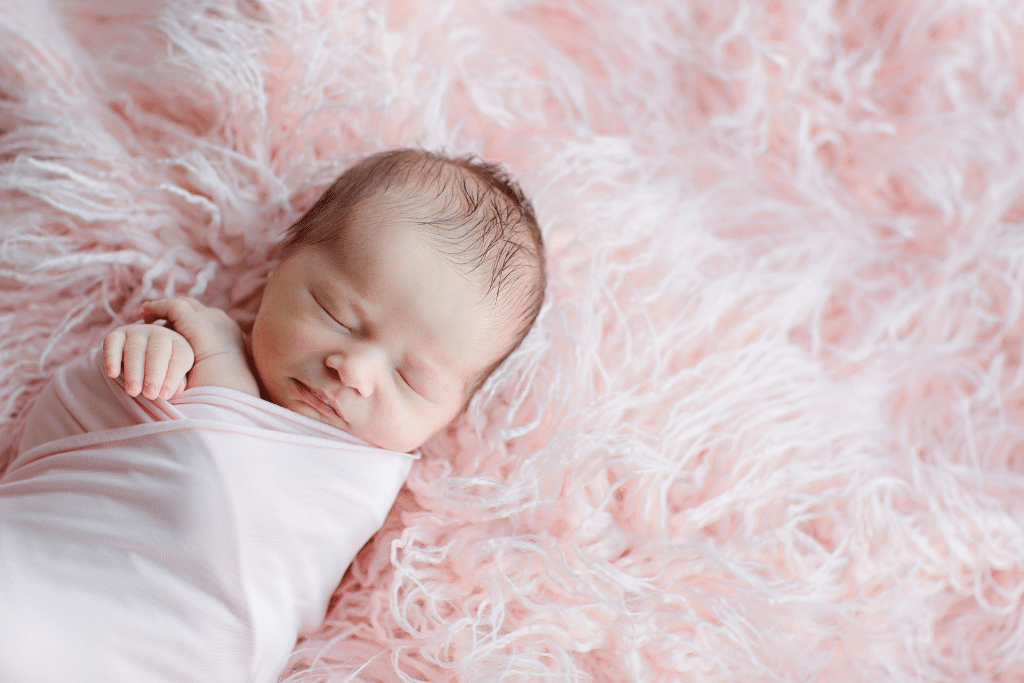Motherhood is one of the grandest adventures we undertake. Learning to become a mom starts the moment you get the news. But, we can not pretend it is all sunshine and daisies. It is more like diaper rash and team no-sleep-for-days-on-end, but we would not trade it for the world. There is no rulebook on how to be a successful mother, but there are some trade tricks.
Sleep for mommy and baby is of the utmost importance. Although getting into a new routine is challenging, new moms are encouraged to try to sleep when their newborns tap out. Using the baby’s nap can increase stamina and energy for the mom and be linked to higher levels of maternal bonding. The question is, what helps the baby sleep longer?
Swaddling. Swaddling is known to create a soothing and calm environment for babies that promotes longer sleep. The practice of swaddling is wrapping a newborn in a baby blanket in a pattern that resembles the womb.
Even though swaddling is common, but dressing a baby for sleep is not always done correctly. So what are the best ways to dress a baby for sleep?
How to Dress Newborn for Sleep
The age-old question of what a baby should wear to sleep can plague the mind of most mommies throughout their child’s infancy. We may talk to our babies, but they do not talk back. So it can be hard to gauge their comfort levels and how hot or cold they are when sleeping.
Thankfully, babies are humans, too! Trust your instincts. Your baby will give you cues as you learn and grow together, and what seems impossible will not be. Don’t worry. Along with the natural communication that will develop between you and your child, we have practical tips for you to reference.
Generally speaking, when dressing newborns or toddlers, you should:
- Refer first to your comfort level
- Then wrap the baby in slightly warmer clothes, swaddlers, or blankets than what you feel is comfortable.
Moms can reference the standard thermal overall grade (TOG) table for a more in-depth understanding.
- Light
- 75 degrees Fahrenheit or more
- 0.5 TOG
- Includes
- Onesies
- Baby t-shirts
- Paired with a light swaddler or blankets
- Summer
- 64 – 75 degrees Fahrenheit
- 1.0 TOG
- Includes
- Onesies
- Baby t-shirts
- Light mid or long sleeve baby t-shirts
- Leggings or light pants
- Paired with a light swaddler or blanket
- Standard
- 50 – 70 degrees Fahrenheit
- 2.5 TOG
- Includes
- Long or short sleeve onesies
- Paired with long sleeve baby t-shirts and leggings or pants
- Paired with swaddlers or blankets
- Includes
- Winter
- 59 degrees Fahrenheit or lower
- 3.5 TOG
- Includes
- Heavy onesies
- Paired with heavy long sleeve baby t-shirts and leggings or pants
- Heavy sleepsacks
- Heavy swaddlers or blankets
Swaddlers and Blankets

Swaddlers are moms’ standard sleep aid when putting their babies to sleep. They provide comfort and support and help lull the newborn into a deep sleep. Traditionally, swaddlers and blankets can be used alone, depending on the temperature. However, it is up to the parent’s discretion.
Generally speaking, babies should not sleep with bedding or blankets. Extra linen in a bassinet or crib can be a dangerous choking hazard for babies. Swaddlers are different because they are uniquely placed to hold the baby in a specific position. If you plan on using a swaddler to put your baby to sleep, ensure it is wrapped tight enough to control the position but not so tight that it will cause discomfort.
Swaddlers provide a feeling of security to your baby, especially when you aren’t able to hold them or need to put them down for a moment. The snug wrap makes your baby feel secure. Why? The warm, close-fitting swaddle feels similar to the womb where they’ve spent all of their lives up until birth. Just as we adult humans prefer our familiar comforts, our babies do also!
Note: Swaddlers and blankets are a viable option for babies until they begin moving around independently. It becomes a hazard to leave them bundled up in that position at this stage.
Do babies wear anything under swaddle?
What should a baby wear under the swaddle? There are several layering options for swaddlers that parents can consider. Onesies, light t-shirts and pants, and heavy clothing options are all viable with swaddlers or blankets.
It is important to note that babies can get overheated. So it is best to try not to overdo any layering in cooler settings or winter temperatures. Refer back to the rule of thumb. If it is too hot for you, it is almost certainly too hot for the baby.
Onesies
Can baby sleep in a onesie? Of course, they can! Onesies are a go-to option for most moms. This type of clothing provides flexibility for the baby and the mother. When you consider changing, feeding, burping, and all the rest that goes into your little one’s day, onesies are often the easiest and most comfortable option. Swaddlers or other layered clothing can become a hassle in certain situations.
Baby Clothes
Light baby clothes are also an option for sleeping babies. They can be used alone or with onesies or swaddlers. It is dependent upon the temperature and comfort of the parent.
Dressier baby clothes are cute for outings, but they are not practical for everyday wear and definitely not for sleep time. In terms of sleeping, light everyday baby clothes should be open and easy to move around in for the baby. And easy to move on and off for mom.
What Do Babies Sleep In During the Summer (Or Winter)?
Many emphases are put on the temperature being a factor in dressing a baby for bed. It is easy to forget that babies are human too. As smaller versions of us, they can become irate or bothered when they feel uncomfortable. How did you act the last time you were overheated and tried to get to sleep? Well, your baby feels your pain.
Because they can not tell us their problems directly, moms must rely on trial and error to find the issue. For example, studies have shown that if the diaper is clean, the baby refuses to eat, and they have tuckered out but will not sleep, the answer lies somewhere else.
The comfort of their clothing plays a part, but the amount of warmth or coolness they receive affects them too. Overheating and cooling can be a serious potential threat to babies. Health issues like sudden infant death syndrome (SIDS) or heat rash can be brought on by not maintaining the appropriate temperature for babies. Again, comfortability is typically the solution.
Common signs your newborn is too hot or too cold are:
- Excessive sweating
- Damp hair
- Cold skin
- Accelerated or staggered breathing
- Rash
Summer
If you look at our list above, you will note that summertime or temperatures over seventy degrees Fahrenheit call for light onesies or light swaddlers. In these temperatures, one layer is sufficient. Moms can choose between one option or the other.
Winter
Parents can go overboard in the winter. To keep the baby warm, mommies can overdress the baby, leading to personal discomfort and overheating babies.
For sleep in winter, babies have been found to be most comfortable in long or short sleeve onesies accompanied by a heavy swaddler, heavy sleep sack, or a long or sleeve baby shirt and pants.
Tip: Household temperatures of 68 to 78 degrees Fahrenheit are recommended for babies throughout the year.
Do Babies Sleep Better With Clothes On?
It is clear that babies are found to sleep longer when they are at peace. And their peace depends on a clean diaper, a full tummy, and the proper body temperature. But, the right temperature does not always require clothes.
Remember our motto; babies are just tiny humans. They do everything you do but with very little communication. If you can sleep without clothes on, so can they. In warmer settings, it is perfectly acceptable for a baby to sleep only in a diaper or a very light swaddler.
Sleeping with just a diaper is not recommended in temperatures under 70 degrees Fahrenheit or cooler months. Even if the temperature is at least 70 degrees Fahrenheit, babies will tell you if they are cold with just a diaper. They will continue to fuss, wake up from sleep early, or be cold to the touch when you check on them.
Babies want to be free. For them, clothing is optional; it is not always a necessity. I know some moms who wish that was a rule for them too! But in all seriousness, babies sleep about the same whether they are in a diaper or a onesie. They only fuss if there is discomfort, like if their clothes are too tight or if their clothes do not suit the temperature.
In short, don’t overthink it, and don’t discount your instincts and intuition.
Clothing Accessories
Clothes are one thing. Accessories are another. Where do items like socks and hats fall for sleeping babies? Babies are simple (but so not simple); the same rules apply. If the mom is wearing socks to bed, it is safe to assume that the baby needs socks to sleep.
Fussy babies at nap time can tend to stem from too much or too little heat. Keep in mind that a baby’s body temperature should be taken into account at all times. Moms must be aware of the room or outside temperature and their relation with the clothes on their baby.
Socks

Sleeping accessories also depend on which layers of clothing are being used. If the baby is being put to sleep in a light onesie with a sleep sack, socks can be extreme. However, if a baby is put to sleep in only a onesie and there is a slight chill in the air, the baby could use some socks.
Use your discretion when choosing whether or not to put socks on the baby to sleep. Warmer months do not typically require socks, but socks may be needed if the air is colder in the home with the air conditioning running. If your feet catch a chill, then the baby’s feet will probably be cold as well.
Hats

Did you know that humans release heat from their heads? Well, babies do that too. For this reason, it is usually never recommended that babies wear hats or any other accessories over their heads while sleeping. Leaving a hat on can cause heat to accumulate, and a baby can quickly overheat since there is no way to release it.
Baby should only wear hats if they are out in cold weather. If your baby happens to fall asleep while out and about with a cap on their head, it shouldn’t be a cause for concern. However, once you are back inside, you should immediately remove the hat from the baby’s head and let them continue their rest.
How to Care for a Newborn Trying to Sleep
Being a mom is not for the weak. Questions like what should baby be dressed for sleep and how to dress baby for sleep in air conditioning constantly flow through your head. It is a revolving door of anxiety, and am I doing this right?
We get it. Every mom has been there!
Though social media and what you see on TV may try to tell you otherwise, no mommy is perfect, and a lot of things are simple trial and error. The best thing to remember is that you strive to make the best decision for you and your baby with the information you have.
You will make mistakes, and that’s okay! It doesn’t make you a bad mom.
How to Care for a Newborn Trying to Sleep: Rule #1
Babies are human. Their feelings are pretty similar to yours. Ask yourself:
- How do I dress for bed?
- What is the typical temperature in the home?
- How accessible are the clothes I sleep in?
- What would I find uncomfortable to wear to sleep?
Then apply those same answers to your baby. It is recommended that babies wear the same or at most one additional layer of clothing as their moms while sleeping. A standard temperature between 68 and 78 degrees Fahrenheit is acceptable for newborns and infants.
How to Care for a Newborn Trying to Sleep: Rule #2
Avoid keeping the baby excessively warm. Many new mommies tend to overdress the baby outside and inside the house. Research also suggests that moms that lean towards overdressed babies can stem from cultural norms and practices.
Traditions are important, but so is new scientific research. We rely on grandmas around the world for child-rearing wisdom. However, some customs have been proven to do more harm than good. Overdressing a baby is one of these potentially harmful practices.
The need to keep a baby warm is understandable. But, many do not take our motto, babies are human, into consideration. About 24 to 48 hours after being born, babies pretty much process their body heat at the same rates as adults. As cute as they may look, combined hats, socks, onesies, swaddles, and sleep sacks are unnecessary. Too much!
Hats should never be worn on sleeping babies. Not only do hats lead to overheating, but they are also a potential choking hazard for babies. The heat releases through the head, so caps capture heat. Contrary to hats, socks can be worn while babies sleep. But, it is essential only to use socks as needed.
Continuing to overdress, a baby has the potential to lead down a very dark road. Issues like heat rash, sudden infant death syndrome (SIDS), or changes in breathing can all be effects of improperly dressing a baby for sleep.
Signs of overheating can be linked to excessive sweating, damp hair, cold skin, accelerated or staggered breathing, and rashes.
How to Care for a Newborn Trying to Sleep: Rule #3
Dress the baby for the temperature and the season. There is no one way to dress a baby throughout the year. How you decide to dress your baby depends on the temperature of the home and the temperature outside.
In warmer months like spring and summer, it is appropriate for babies to wear light baby clothing. This can constitute onesies, swaddlers, or t-shirts worn separately. Cooler months, winter and fall, are for long or short sleeve onesies, t-shirts, and pants, footie pajamas, swaddlers, or sleep sacks.
Remember always to keep rules one and two in mind when deciding what baby clothes combinations you should use.
How to be a successful mother is not about doing one thing or the other. Being a successful mother is about constantly providing love and care and learning something new about your baby every day.
As your baby grows, you will learn more and more about their everyday needs and wants. What they prefer to wear while sleeping is no different. Your tiny human will continue to communicate with you in the best way possible, and it’s up to you to pick up the cues.
You got this, momma!
Hi – I’m Alina and I am a soon to be mom going through the journey of becoming a parent. I am a writer at heart and I love sharing about pregnancy tips and other busy mom hacks.
